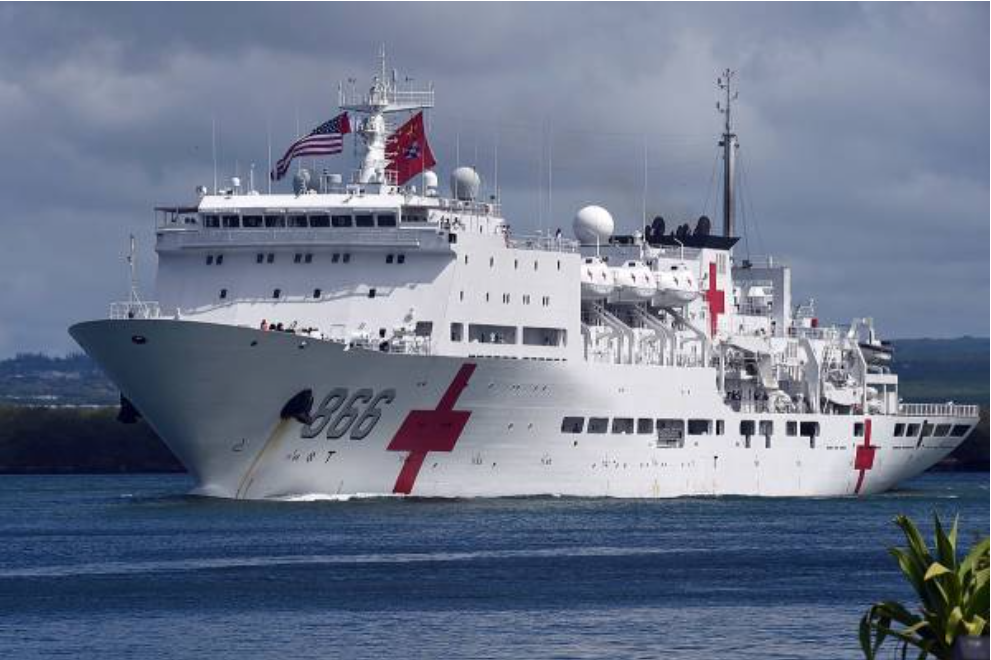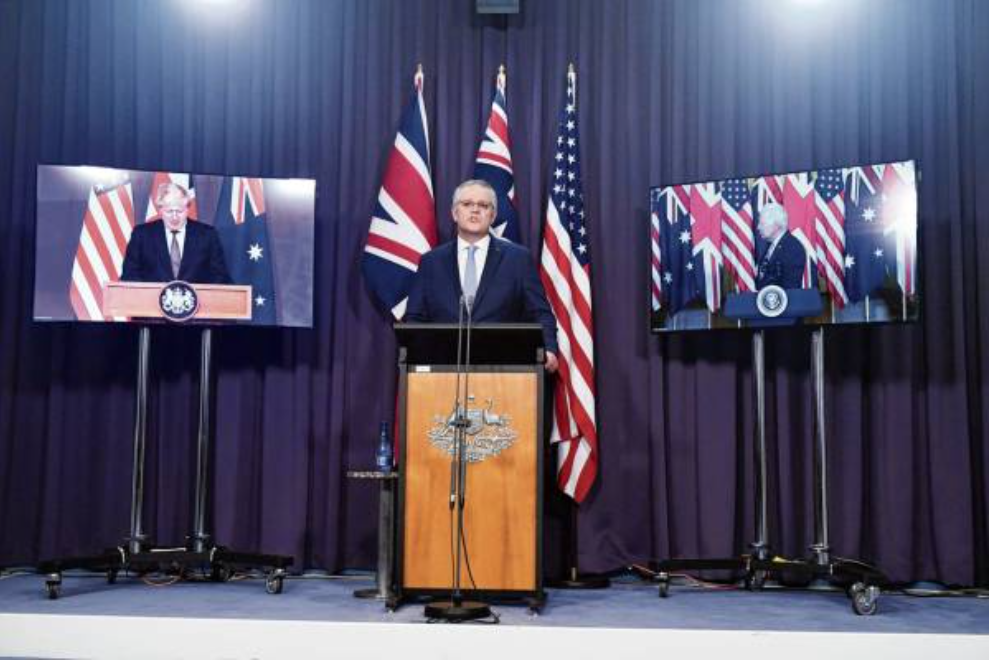Zhou Bo: Senior fellow at the Centre for International Security and Strategy at Tsinghua University and a China Forum expert.
What best represents China's military strength? The answer: its navy.
At the end of last year, the Chinese People's Liberation Army Navy had 360 battle ships, surpassing the United States Navy's 297 vessels. And that gap is expected to widen in the coming years by most estimates.
To paraphrase former Czech president Vaclav Havel, China's naval build-up has happened so rapidly that the world has not had time to be astonished. In the 1974 Battle of the Paracel Islands between the naval forces of China and South Vietnam, the four Chinese warships combined were dwarfed in size by the largest ship of the South Vietnamese navy.
Unlike the PLA Army, which fought to establish the People's Republic of China, and the PLA Air Force, which fought in the Korean War, the least war-tested PLA Navy now stands at the forefront, simply because today, all threats to China come from the sea.

Be it in the Taiwan Strait or in the South China Sea, the PLA Navy has to prepare for possible conflict with the US Navy. US President Joe Biden has said that US rivalry with China will take the form of "extreme competition" rather than conflict; the problem is, if competition is already extreme, it is probably like tiptoeing on a tightrope that is only one step away from conflict.
The US is said to maintain a policy of strategic ambiguity on Taiwan. But since the Trump administration, the US government has been salami-slicing away that ambiguity in diverse ways, including enhancing exchanges with Taipei, sending warships to sail provocatively through the Taiwan Strait and deploying its servicemen in Taiwan to help with military training.
It is not surprising then that Beijing is compelled to increase pressure on the island by sending more military aircraft to fly near Taiwan. In a meeting with US Secretary of State Antony Blinken on Oct 31, Chinese Foreign Minister Wang Yi warned the US not to pursue "a fake One China policy".
Should conflict erupt in the Taiwan Strait, China cannot afford to lose in a war defending its sovereignty. And it probably won't.。
With Taiwan just 160km away from the mainland, the US military will find itself in an asymmetrical disadvantage from the start. It is questionable that its Asian allies will readily allow Americans to use their military bases to turn their homelands into battlefields.。
In the South China Sea, the stronger the PLA Navy becomes, the less likely it will bear with American provocations at China's doorstep on a regular basis.
Unlike in the Cold War where there were clearly defined spheres of influence which allowed the two superpowers to deconflict, there are no buffer zones between the two navies in the South China Sea. Accidents and close calls have occurred, including a deadly collision of two military aircraft in 2001.
The so-called Hainan incident - which led to the death of a Chinese pilot and the detention of the crew of the American reconnaissance plane on the island - was resolved peacefully only after the US ambassador sent a letter in which he said "very sorry" two times.
The situation is far different now. The mutual distrust and lack of strategic consensus between Beijing and Washington leave hardly any room for "common- sense guardrails", in the words of President Biden during his recent virtual meeting with China's President Xi Jinping. De-escalation in a similar crisis will be far more challenging than in the past. The few confidence-building measures in place are only tactical arrangements which can hardly resolve strategic distrust.
Can US count on Aukus and Quad?
Both China and the US have vowed to avoid a new Cold War. But if the rivalry is set to intensify, can the US count on its alliances in the Indo-Pacific?
Admit it or not, Aukus, the trilateral security pact between Australia, the United Kingdom and the US, and the Quad, involving the US, India, Japan and Australia, are Washington's thinly veiled dual approaches in containing China.

The question is, how useful are they? If the first of Australia's eight nuclear- powered submarines under Aukus is not going to be delivered before 2040, the subs will not become serious game changers. Instead, they will haunt Canberra for decades to come. Australia has no nuclear industry. If these subs have to be maintained from time to time in another country, Australia's submarine capability cannot be sovereign.
The Quad could grow into anything other than a useful military coalition against China.
Fundamentally, are the dialogue partners prepared to sacrifice their bilateral ties, especially the huge economic interactions, with China, to go on a hostile footing?
Militarily, Australia, a Quad member, is already part of Aukus. Japan, while not an Aukus member, is supportive of it. Therefore India's attitude towards China is critical to the survival and growth of the Quad. But even if India is not happy with the PLA Navy's presence in the Indian Ocean, it can hardly protest because all the military operations of the PLA in the Indian Ocean are humanitarian in nature, be it counter-piracy or disaster relief. There is no likelihood of a military clash between the PLA Navy and the Indian Navy in the Indian Ocean like the one in the land border areas between the two armies in June last year.
Blue water navy for a global China
If it is only for resolving the Taiwan and South China Sea issues, the PLA Navy does not need so many ships. As about 90 per cent of global trade travels by sea, the security of the international sea lanes cannot be more crucial for China, the largest trading nation and the largest crude oil importer in the world. A global China calls for a blue water Chinese navy.
This is why since December 2008, China has been sending flotillas to patrol the waters off the Horn of Africa. Almost half of the merchant ships escorted by Chinese task forces are foreign ships, a demonstration of how China tries to combine its own interests with its international responsibilities. In the Gulf of Aden, China has been working in tandem with the North Atlantic Treaty Organisation, the European Union and the Combined Maritime Forces led by the US and other countries.
China aims to build a world-class military by 2049 when it celebrates its centenary. This is entirely possible as the PLA today is already seen by many as second only to the US military and there are still more than two decades to go. The question is how China might use its military that will one day be on par with the US military. Of course, a stronger PLA will be better positioned to protect China's sovereignty.
But unlike the US, China has no missionary zeal to intervene in the domestic affairs of others or to police the world. Despite speculation that China would establish a "string of pearls", that is, a series of overseas military bases across the Indian Ocean, China has so far built only a logistical supply base in Djibouti in 2017. It has no appetite to repeat the imperial overstretch that has, arguably, caused America's decline.
So, in a snapshot, how is one to view the PLA Navy?
Since 2010, Peace Ark, the hospital ship of the Chinese navy, has sailed around the world providing medical treatment to hundreds of thousands of people. This is in step with Admiral Zheng He's voyages in the Indian Ocean 600 years ago when his unrivalled fleet invoked more admiration than awe.。
If China's biggest destroyer Nanchang represents the hard power of China, then Peace Ark sends another message: the heft of a great power lies in humility.
(This article was originally published on The Straits Times on Nov. 25, 2021)
